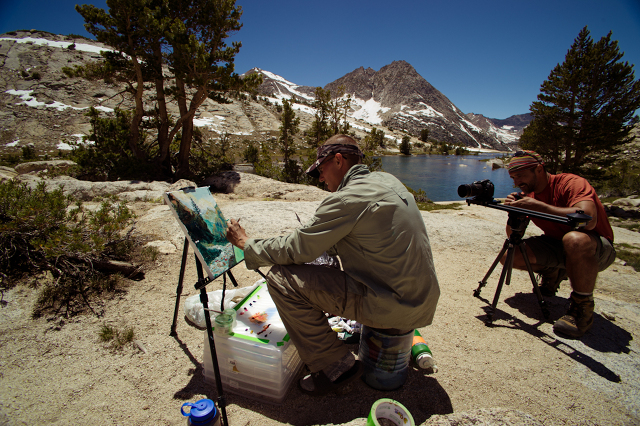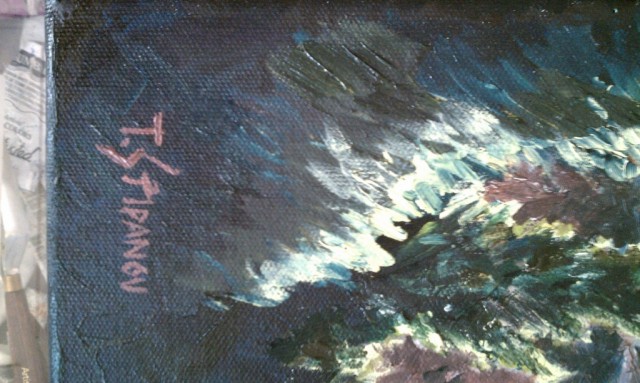PLEIN AIR
3 Nov
Who cares about plein air?
Why do we paint outside en plein air? Why, for God’s sake, did we carry twenty two oil paintings two hundred and twenty miles through the Sierra Nevada?
Let’s take plein air for starters.
Some painters argue that, when painting outdoors, the colors are more vibrant and it’s easier to observe the details. Others say that capturing a place is more than what you see; you have to really feel the wind, the chirping of the birds, and the dusty ground.
I don’t buy that. Painting from a photograph boils a scene down to pixels, each with one hue, value and chroma. Outside, our eyes correct for dark and light areas, outdoor lighting alters the colors, and our inspiring environment is mainly conducive to blowing away our materials. Hands down, painting outdoors is way tougher.
That doesn’t matter. Art, more than producing an image or form, is the process of capturing an essence – a context that lends it meaning and is rooted in human experience.
Sure, the rules of aesthetics matter. Symmetry, complementary colors, and value contrast all contribute to our enjoyment of a piece. But a pretty image alone doesn’t cut it. Art viewers crave meaning. “Who is he?” “How did she make this?” “What is this trying to say?” That background creates the deeper pleasure associated with looking at great art.
We thoroughly experienced our subject, the Muir Trail, as we painted it, by carrying our artwork over passes, across rivers, through clouds, and up mountaintops. It nearly broke our backs.
Our paintings contain the essence of our creative process and our experiences on the trail. That essence is the art.
Plein air is the art. The journey is the art. The artist is the art.
We don’t leave the studio in quest of images. We seek art.

